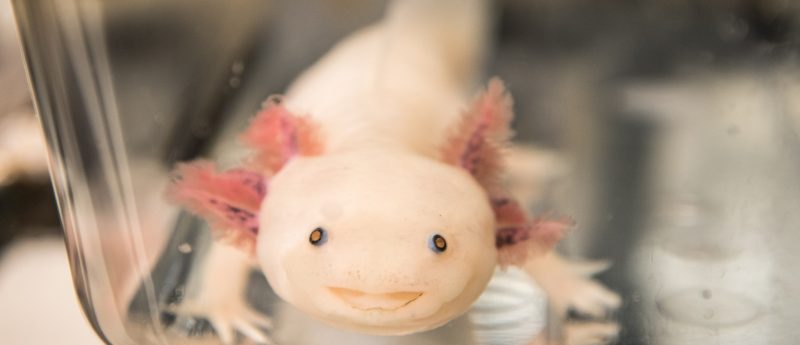Study finds immune system is critical to regeneration

Research conducted at the MDI Biological Laboratory shows heart regeneration in salamanders depends on white blood cells.
The answer to regenerative medicine’s most compelling question—why some organisms can regenerate major body parts such as hearts and limbs while others, such as humans, cannot—may lie with the body’s innate immune system, according to a new study of heart regeneration in the axolotl, or Mexican salamander, an organism that takes the prize as nature’s champion of regeneration.
The study, which was conducted by James Godwin, MDI Biological Laboratory (Bar Harbor, ME, USA) found that the formation of new heart muscle tissue in the adult axolotl after an artificially induced heart attack is dependent on the presence of macrophages, a type of white blood cell. When macrophages were depleted, the salamanders formed permanent scar tissue that blocked regeneration.
The study has significant implications for human health. Since salamanders and humans have evolved from a common ancestor, it’s possible that the ability to regenerate is also built into our genetic code.
Godwin’s research demonstrates that scar formation plays a critical role in blocking the program for regeneration. “The scar shoots down the program for regeneration,” he explained. “No macrophages means no cardiac regeneration.”
Godwin’s goal is to activate regeneration in humans through the use of drug therapies derived from macrophages that would promote scar-free healing directly, or those that would trigger the genetic programs controlling the formation of macrophages, which in turn could promote scar-free healing. His team is already looking at molecular targets for drug therapies to influence these genetic programs.
“If humans could get over the fibrosis hurdle in the same way that salamanders do, the system that blocks regeneration in humans could potentially be broken,” Godwin explained. “We don’t know yet if it’s only scarring that prevents regeneration or if other factors are involved. But if we’re really lucky, we might find that the suppression of scarring is sufficient in and of itself to unlock our endogenous ability to regenerate.”
Interested in studies in animal models? Find out more:
The prevailing view in regenerative biology has been that the major obstacle to heart regeneration in mammals is insufficient proliferation of cardiomyocytes, or heart muscle cells. But Godwin found that cardiomyocyte proliferation is not the only driver of effective heart regeneration. His findings suggest that research efforts should pay more attention to the genetic signals controlling scarring.
The extraordinary incidence of disability and death from heart disease, which is the world’s biggest killer, is directly attributable to scarring. When a human experiences a heart attack, scar tissue forms at the site of the injury. While the scar limits further tissue damage in the short term, over time its stiffness interferes with the heart’s ability to pump, leading to disability and ultimately to terminal heart failure.
In addition to regenerating heart tissue following a heart attack, the ability to unlock dormant capabilities for regeneration through the suppression of scarring also has potential applications for the regeneration of tissues and organs lost to traumatic injury, surgery and other diseases, Godwin said.
Godwin’s findings are a validation of the MDI Biological Laboratory’s unique research approach, which is focused on studying regeneration in a diverse range of animal models with the goal of gaining insight into how to trigger dormant genetic pathways for regeneration in humans. In the past year and a half, laboratory scientists have discovered three drug candidates with the potential to activate regeneration in humans.
“Our focus on the study of animals with amazing capabilities for regenerating lost and damaged body parts has made us a global leader in the field of regenerative medicine,” said Kevin Strange, MDI Biological Laboratory president. “James Godwin’s discovery of the role of macrophages in heart regeneration demonstrates the value of this approach: we won’t be able to develop rational and effective therapies to enhance regeneration in humans until we first understand regeneration works in animals like salamanders.”
The next step is to study the function of macrophages in salamanders and compare them with their human and mouse counterparts. Ultimately, Godwin would like to understand why macrophages produced by adult mice and humans don’t suppress scarring in the same way as in axolotls and then identify molecules and pathways that could be exploited for human therapies.
Godwin’s paper was published in npj Regenerative Medicine in partnership with the Australia Regenerative Medicine Institute. His research is supported by an Institutional Development Award (IDeA) to the MDI Biological Laboratory from the National Institute of General Medical Sciences of the National Institutes of Health under grant numbers P20GM0103423 and P20GM104318.
Source: MDI Biological Laboratory press release